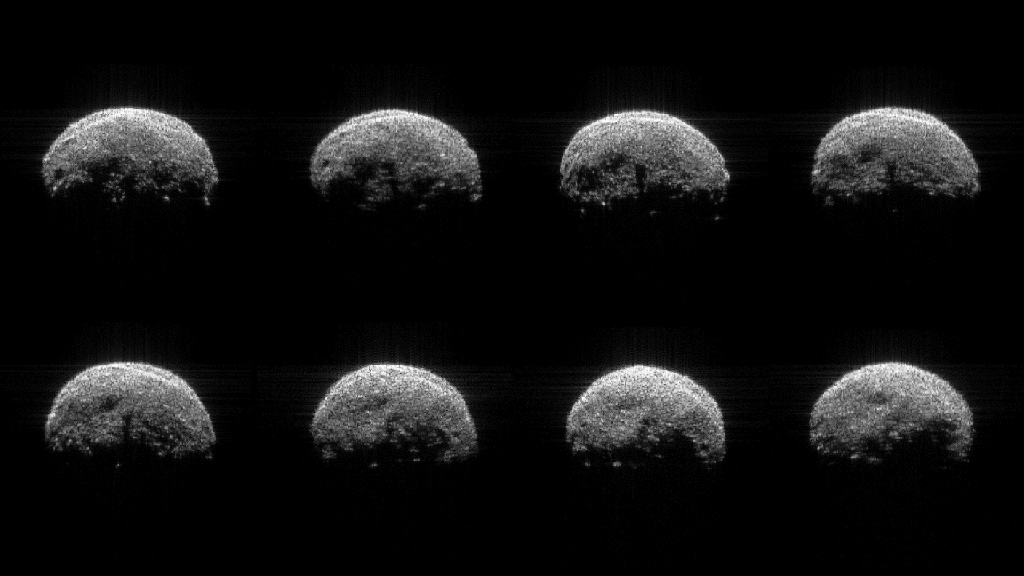Swift Captures Flyby of Asteroid 2005 YU55
As asteroid 2005 YU55 swept past Earth in the early morning hours of Wednesday, Nov. 9, telescopes aboard NASA's Swift satellite joined professional and amateur astronomers around the globe in monitoring the fast-moving space rock. The unique ultraviolet data will aid scientists in understanding the asteroid's surface composition.
The challenge with 2005 YU55 was its rapid motion across the sky, which was much too fast for Swift to track. Instead, the team trained the spacecraft's optics at two locations along the asteroid's predicted path and let it streak through the field. The first exposure began a few hours after the asteroid's closest approach and fastest sky motion — near 9 p.m. EST on Nov. 8 — but failed to detect it.
Six hours later, around 3 a.m. EST on Nov. 9, Swift began an exposure that captured the asteroid sweeping through the Great Square of the constellation Pegasus. The 11th- magnitude rock was then 333,000 miles away and moving at 24,300 mph, about an hour from its closest approach to the Moon.
That exposure gave the Swift team more than a streak through the stars. "A novel feature of Swift is the ability to go into a mode tracking the arrival of every photon captured by the instrument. With that information, we can reconstruct the asteroid as a point source moving through the Ultraviolet/Optical Telescope's field of view," said Neil Gehrels, lead scientist for Swift at NASA's Goddard Space Flight Center in Greenbelt, Md.
The 27-minute-long image was effectively sliced into short 10-second-long exposures, which then were combined into a movie. This allows scientists to study short-term brightness variations caused by the object's rotation.
The result is a movie of 2005 YU55 at ultraviolet wavelengths unobtainable from ground-based telescopes. For planetary scientists, this movie is a treasure trove of data that will help them better understand how this asteroid is put together, information that may help make predictions of its motion more secure for centuries to come.
The press release on NASA.gov is here.
Asteroid 2005 YU55 whisks through the field of view of Swift's Ultraviolet/Optical Telescope (UVOT) on Nov. 9, just hours after the space rock made its closest approach to Earth. The video plays on a background image from the Digital Sky Survey that shows the same region, which lies within the Great Square asterism of the constellation Pegasus (times UT).
Credit: NASA/Swift/Stefan Immler and DSS
For complete transcript, click here.
For More Information
Credits
Please give credit for this item to:
NASA/Goddard Space Flight Center
-
Video editor
- Scott Wiessinger (USRA)
-
Producer
- Scott Wiessinger (USRA)
-
Scientist
- Stefan Immler (UMCP)
-
Writer
- Francis Reddy (SPSYS)
Release date
This page was originally published on Friday, November 11, 2011.
This page was last updated on Wednesday, May 3, 2023 at 1:53 PM EDT.
Missions
This page is related to the following missions:Series
This page can be found in the following series:Tapes
The media on this page originally appeared on the following tapes:-
Swift Captures Flyby of Asteroid 2005 YU55
(ID: 2011122)
Friday, November 11, 2011 at 5:00AM
Produced by - Robert Crippen (NASA)
Datasets used
-
[Swift]
ID: 217
Note: While we identify the data sets used on this page, we do not store any further details, nor the data sets themselves on our site.

